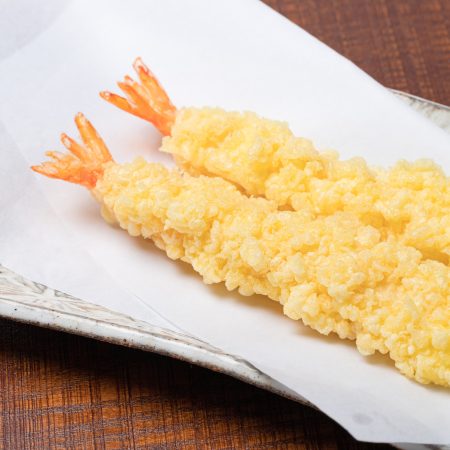Udon deliciousness/About Seasonings
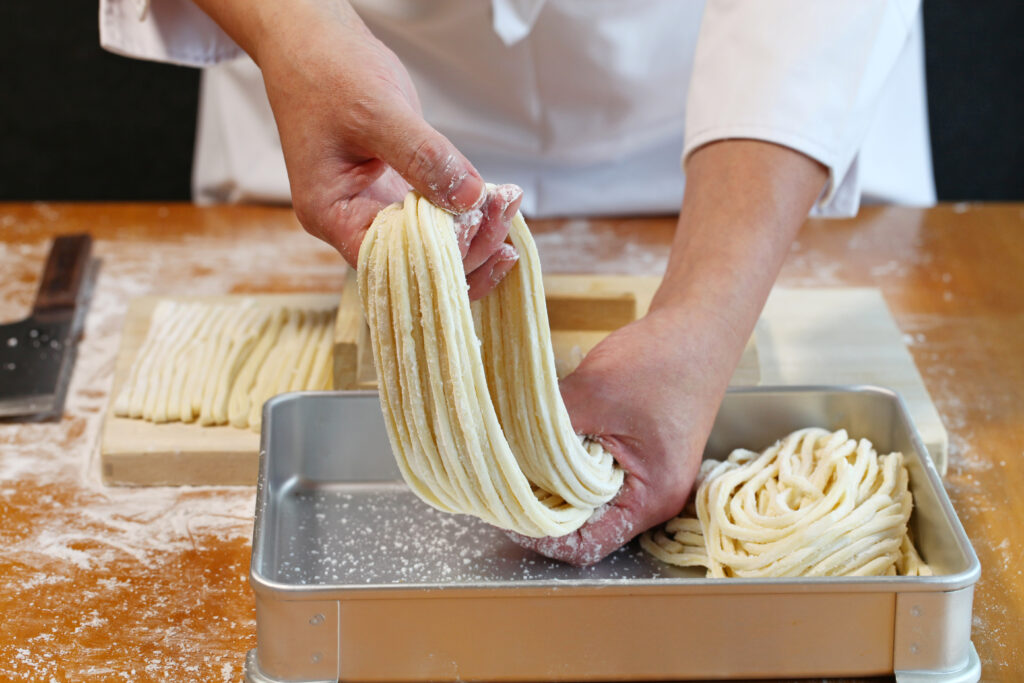
Paragraph 1. The Role of Salt
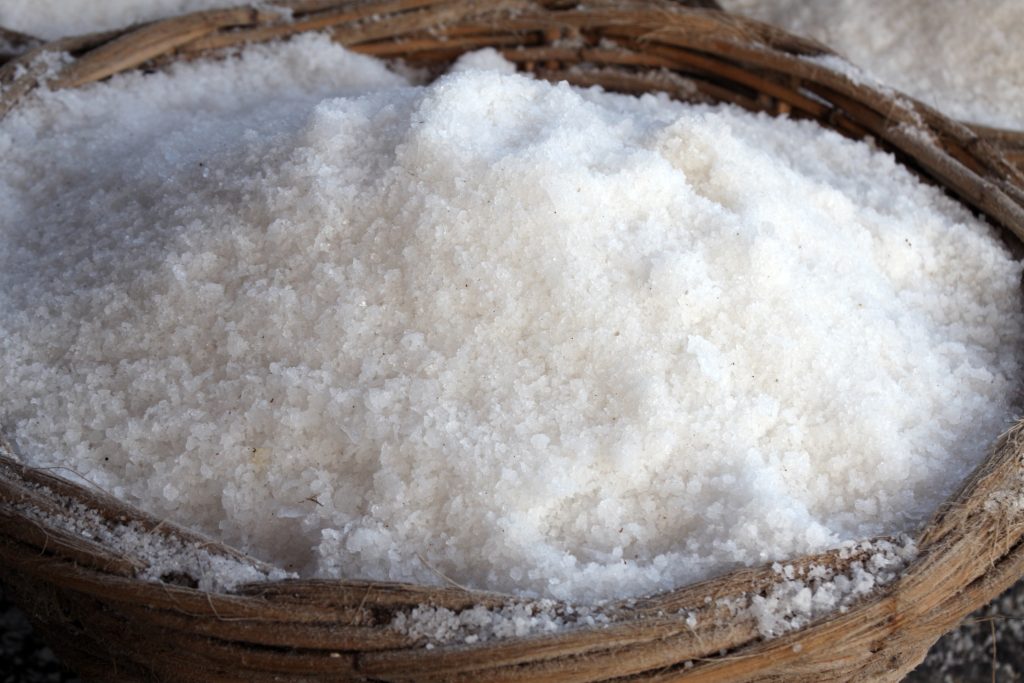
Like udon, pasta is a type of noodle made from wheat flour. Normally, salt is added in moderation when boiling pasta, but not when boiling udon. The reason for this is that the flour used for udon is different from the flour used for pasta.
The flour used for udon is “medium-strength flour. In contrast, the flour used for pasta is “strong flour (durum wheat)” which has particularly strong viscoelasticity. Medium-strength flour contains about 8% protein (gluten), whereas strong flour contains 12-13%. Strong flour is very elastic, and the addition of salt makes it even more elastic. Salt is added when boiling pasta in order to make the noodles al dente while allowing the umami of the salt to permeate the noodles themselves.
Udon noodles are made by adding salt as well as flour and water, the most important reason being that it tightens the gluten in the flour and increases the elasticity of the dough. This is called the shrinking effect of salt, and by allowing the dough to mature for the proper amount of time, it becomes stable without sagging. Salt also suppresses the action of enzymes that break down proteins, prevents the dough from fermenting too much, and has antiseptic properties. This makes udon an excellent food for refrigeration and freezing.
However, not all udon dough contains salt. Miso nikomi udon” in Nagoya, where fresh udon is boiled in broth without boiling is a typical example of udon made without added salt. If salt is added, the salt will dissolve and combine with the miso, making the whole dish, including the broth, taste salty.
Paragraph 2.Udon Dashi (Udon Noodle Stock)
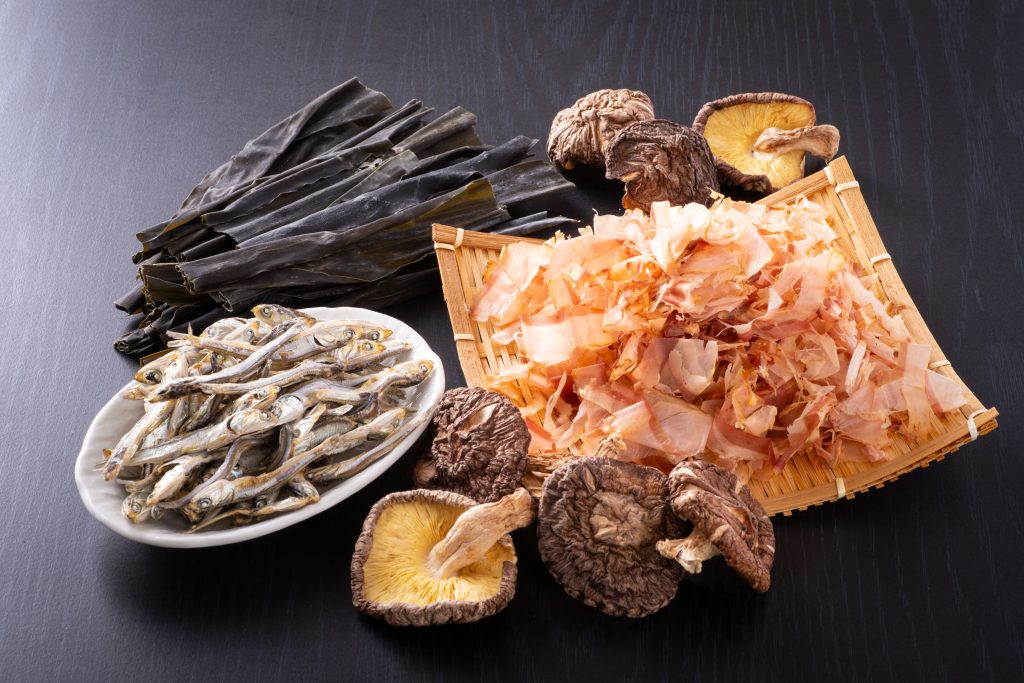
The most important seasoning in Japanese cuisine (wa-shoku) is dashi. Umami, which is the core of dashi, is included in the five basic tastes (sweet, sour, bitter, salty, and umami), and is also described as “umami” overseas.
Umami is composed of various components, of which glutamic acid (a type of amino acid), inosinic acid, and guanylic acid (a type of nucleic acid component) are the most important. Glutamic acid is abundant in vegetable foods such as kelp, while inosinic acid is found in animal foods such as bonito flakes. Guanylic acid is found in mushrooms such as shiitake mushrooms. Glutamic acid has a synergistic effect when combined with inosinic acid. Compared to kombu dashi alone, the combination of kombu dashi and bonito flakes increases umami tenfold or more.
The taste of udon broth varies depending on the type of kelp, such as Makonbu, Rausu Kombu, and Rishiri Kombu. Also for bonito flakes, the belly portion has more fat and a richer flavor, while the back portion has a lighter flavor. In addition to bonito flakes, there are also mackerel flakes, tuna flakes, sardine flakes, and mullet flakes, which are used according to the type of broth desired.
Depending on the region, iriko (dried Japanese anchovy), hirako niboshi (dried flatfish), urume niboshi (dried Urume seaweed), ago niboshi (dried sardines), and dried shiitake mushrooms are also used. In some regions, chicken broth is added to the udon broth, and the taste of the broth alone can vary greatly.
Paragraph 3.Udon soup(つゆ)
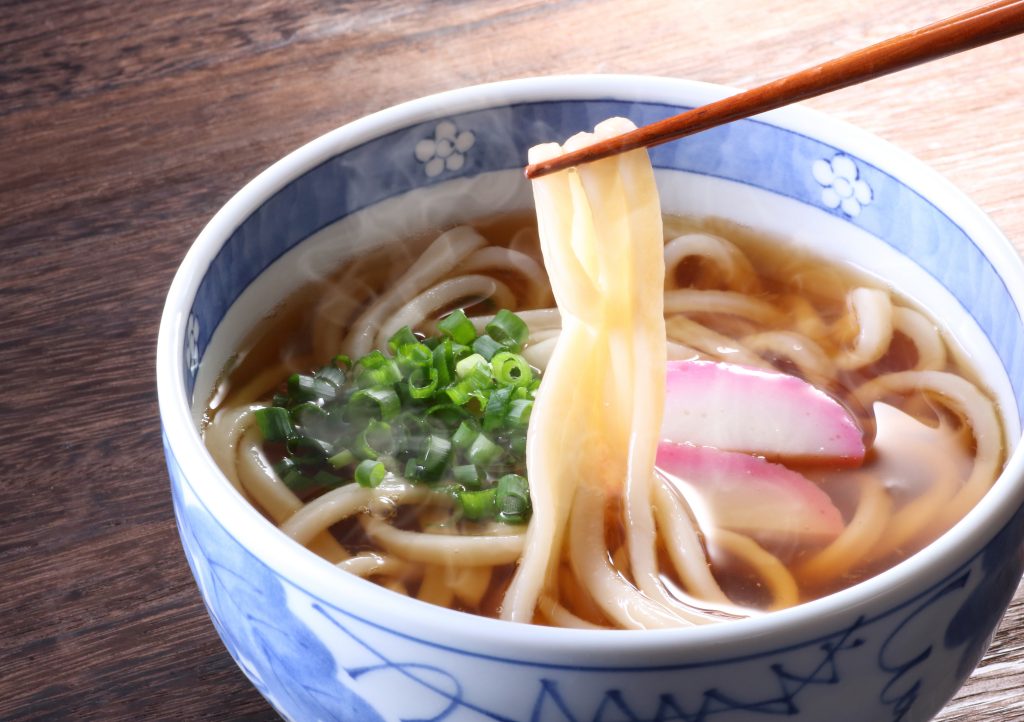
The color of udon sauce is light in Kansai and dark in Kanto, and their divergence is said to be near Sekigahara in Gifu Prefecture. The divergence is said to be near Sekigahara in Gifu Prefecture. Kansai udon is usually served with light soy sauce to take advantage of the udon’s white color. In contrast, Kanto udon is usually served as dipping noodles, which are boiled, cooled in cold water, served in a seiro or colander, and eaten with a dipping sauce made of dark soy sauce. This is said to be because since the 18th century, the dark soy sauce produced in Choshi and Noda in Chiba Prefecture was used for udon as well.
One of the most famous ways to eat Sanuki udon in Kagawa Prefecture, the best udon place in Japan, is “udon with soy sauce on top. Sanuki udon is hard-boiled because soft-boiled udon tends to soak up soy sauce. As a result, the firmness of the udon is emphasized.
Paragraph 4.Yakumi(Condiments)
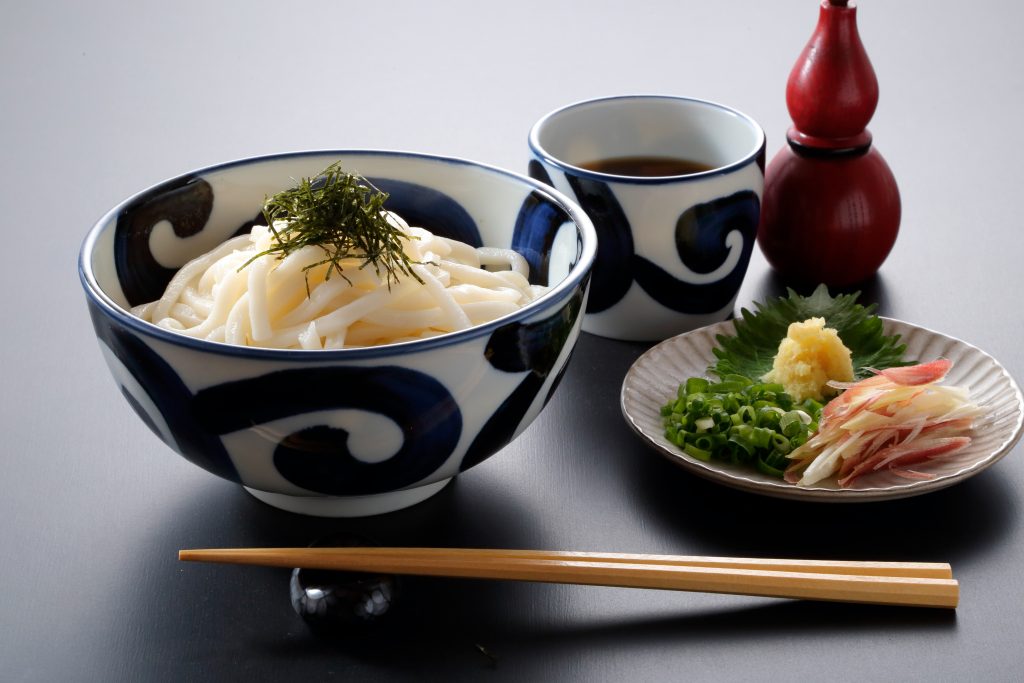
Kendon-ya (mobile udon stalls), which were popular during the Edo period, used “pepper” as a condiment for udon. This may seem surprising, but pepper was imported in large quantities at the time and was beginning to be used by the general public. At first, pepper was used as a condiment for udon noodles, but later, shichimi (seven spice) was introduced, and pepper eventually fell out of use.
In the concept of yakuzen, there is a concept called “seimi,” which classifies the body into five categories ranging from cold to warm: cold, cool, normal, warm, and hot. Flour, the raw material for udon, falls into the “cool” category of these five. The reason why people eat cold udon on a hot summer day is to remove heat from the body and to feel cooler, but according to the concept of “sex flavor,” it is an ingredient that cools the body. The reason why sushi is served with wasabi or gari (pickled ginger) is to warm the body so that it does not become too cold, since raw fish is cooling to the body. For the same reason, ingredients with “warming” properties are often used as condiments for udon. This is the wisdom of the Japanese way of life from long ago.
In addition, soy sauce and salt used in udon tsuyu (udon soup) are “cold” in terms of “taste” and are ingredients that cool the body, so udon with only tsuyu will only cool the body. In addition to the advantage of accentuating the taste of udon, many yakumi (condiments) have the effect of warming the body by complementing the “coolness” of the udon. The “warm” condiments that warm the body include ginger, green onion, chives, chives, wasabi, and shiso, while pepper is “hot” and chili pepper is “very hot. The addition of spices to udon was not only for taste, but also for the sake of the body.


